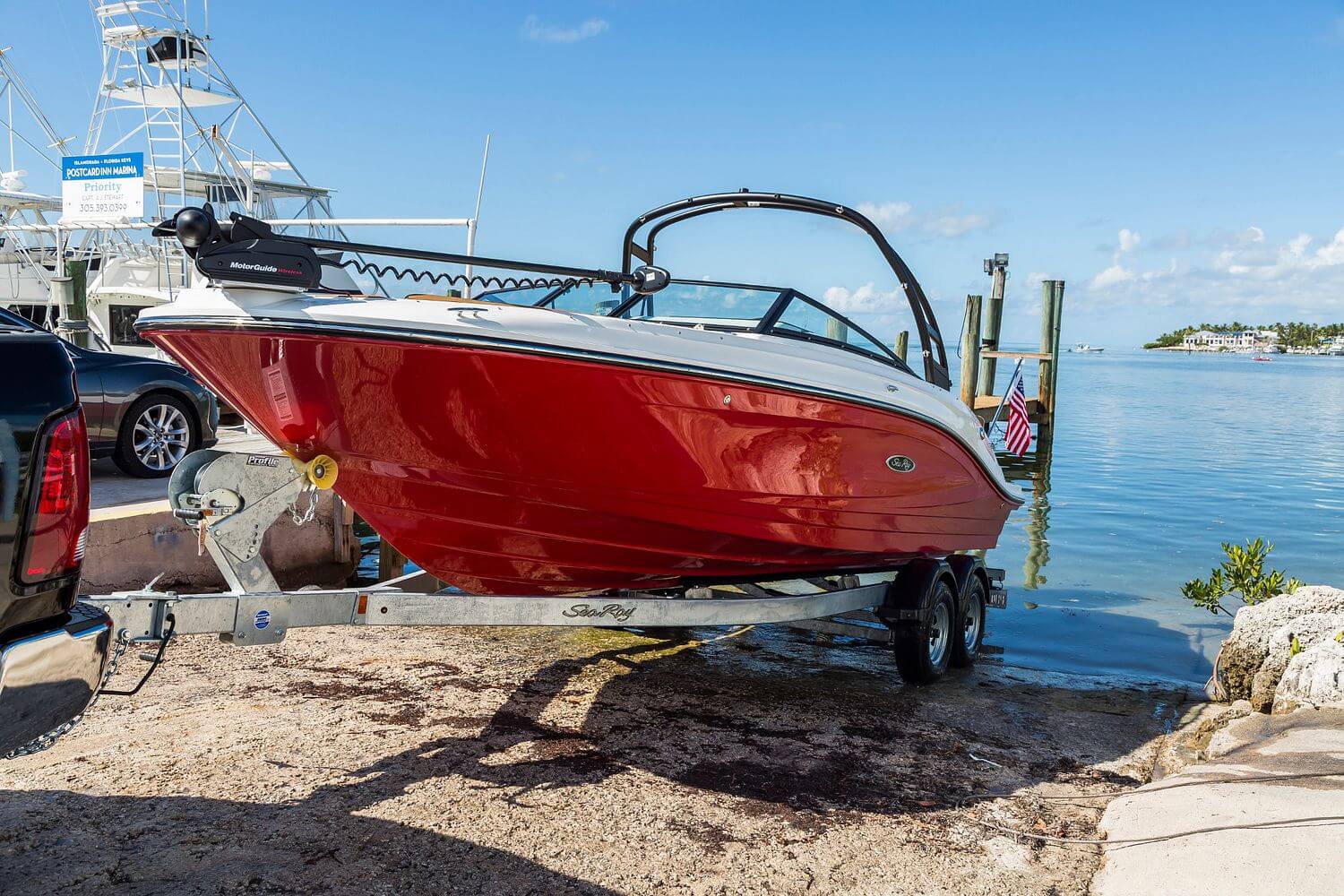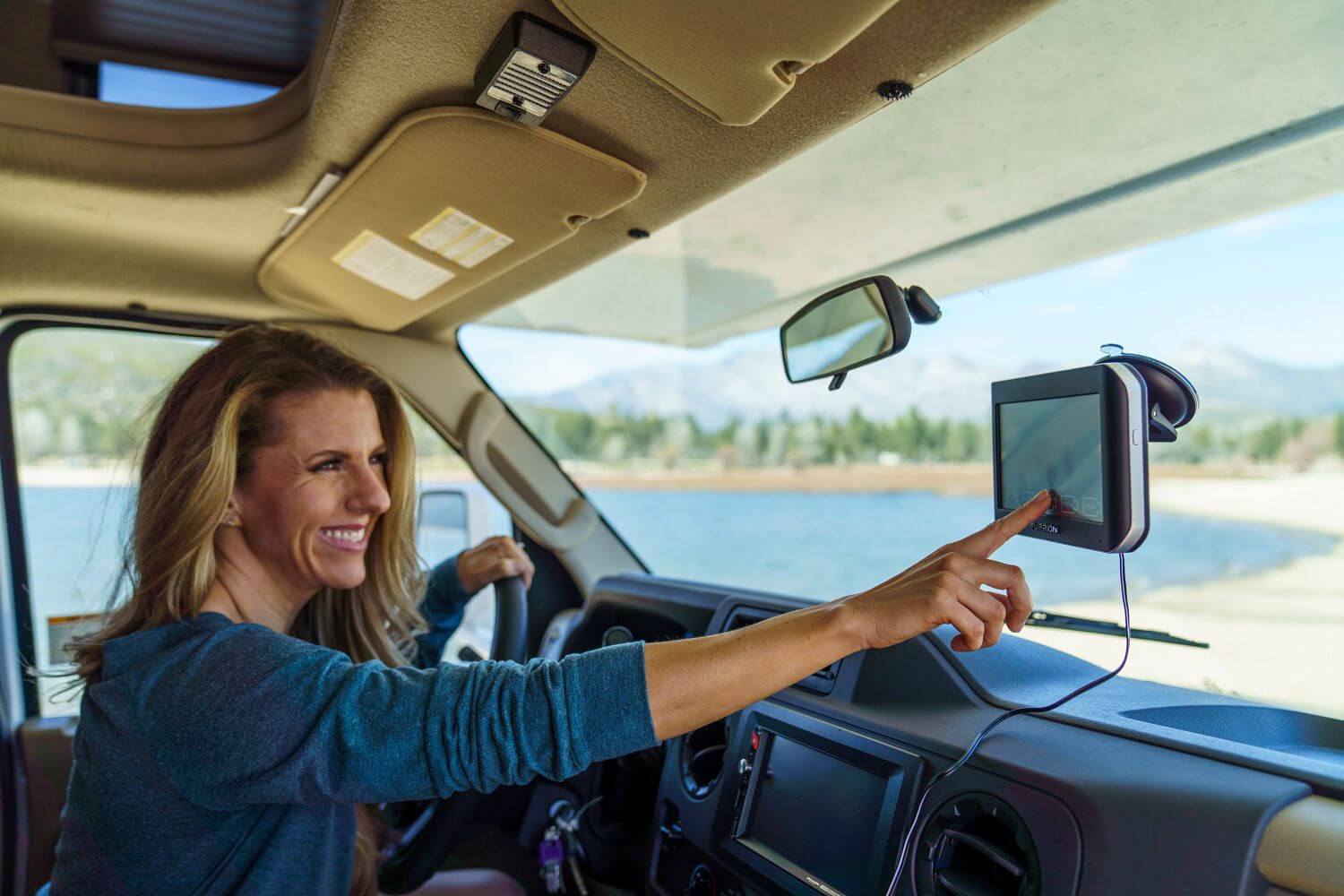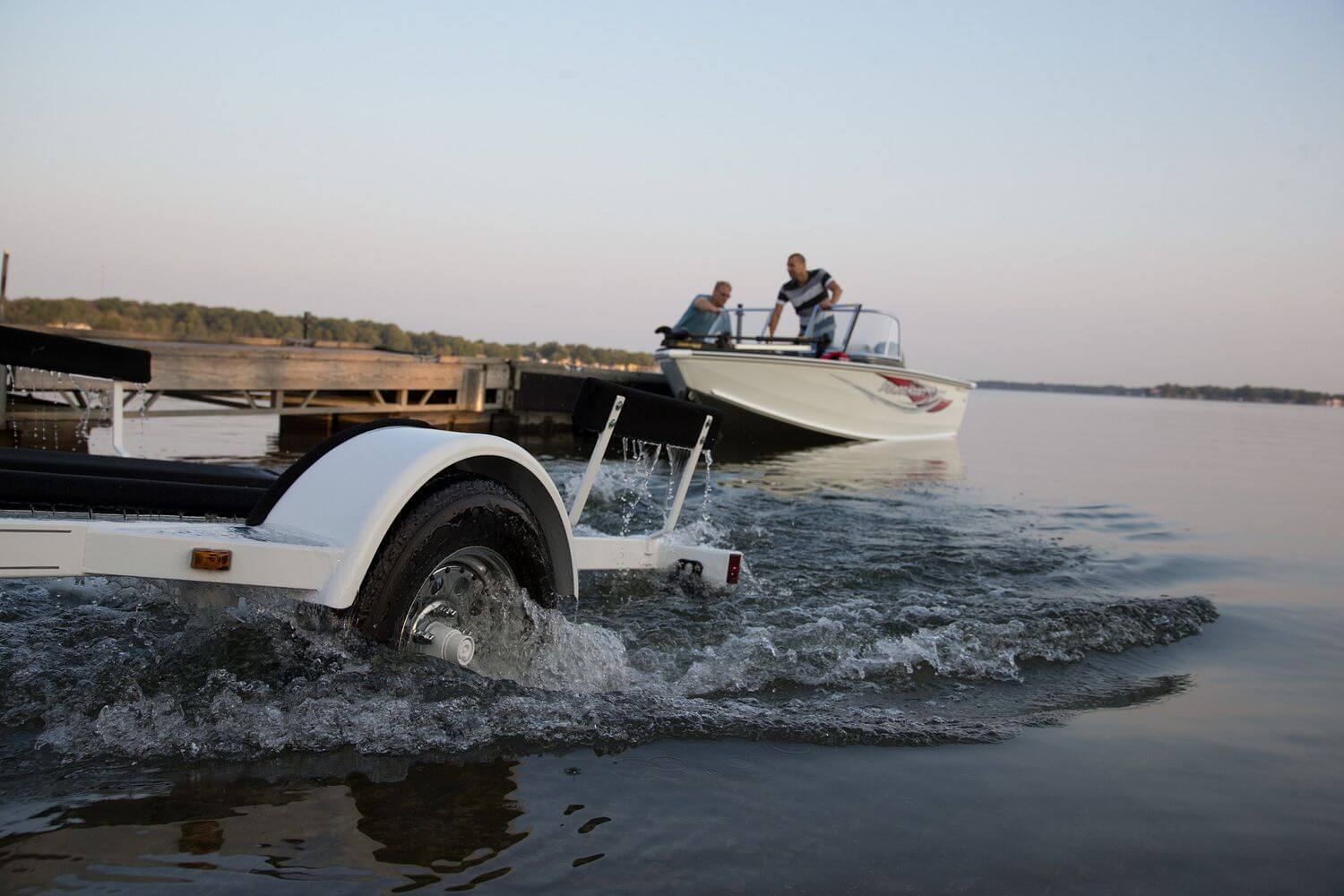Trailering a boat is arguably one of the biggest skills new boat owners must master. Failing to do so is when your boat, trailer, and tow vehicle are susceptible to damage. Always exercise caution and approach it the right way.
With experience comes expertise, but there are important lessons to learn before you try to trailer your boat for the first time. Even experienced boaters sometimes use a checklist to ensure they’ve remembered everything when trailering a boat.
How Much Does a Boat Trailer Weigh?

Boat trailer weights vary according to the type of boat they are meant to transport. However, the average weight of a boat trailer is 600 pounds. Consult the trailer’s manufacturer for its exact unloaded weight and hitch weight ratings.
When it comes to trailering a boat and towing it safely, your tow vehicle will need to handle the combined weight of your boat, trailer, and any watersports equipment you have stored in your boat.
To calculate the payload and towing capacities of your vehicle, you can use this towing capacity calculator.
How to Hook Up a Boat Trailer
A major key to trailering a boat is ensuring a safe connection between your tow vehicle and your trailer. Follow these steps to hook up your boat trailer securely:
1. Align the hitch and hitch ball.

2. Lower the hitch onto the ball.

3. Close the hitch latch and insert the safety pin.

4. Cross the safety chains under the hitch coupler and attach them to your tow vehicle.

5. Ensure the trailer’s breakaway cable is attached to your tow vehicle.

6. Plug in the trailer lights and check that they are working properly.

7. Remove any wheel chocks holding the trailer in place before towing.

How to Back Up a Boat Trailer
Trailering a boat is an important part, but so is driving your boat trailer. Backing up a boat trailer is an art form, but it can be easier than backing up a travel trailer because you’ll generally have more visibility.
Still, it takes some getting used to, and it’s good to tow your boat to an open parking lot nearby to practice before you have the pressure of backing up down a boat ramp.
These tips will help you practice backing up a boat trailer:
1. Set yourself up for success.

When you pull down the boat ramp, the best thing you can do is make a 180-degree turn to align your boat and tow vehicle. This helps to back up straight instead of executing a turn in reverse.
This also allows you to make smaller steering corrections as you back down the ramp. Over-correcting is a common mistake for first-time boat drivers, but the more you keep your steering adjustments small, the easier it will be to correct them if you accidentally steer the wrong way.
2. Remember how your steering will impact your boat.

Backing up a trailer is tricky the first time because the rear of your boat will swing in the opposite direction of the way you steer. When you turn the top of your steering wheel to the left (counterclockwise), the back of your boat will head to the right, and vice versa.
It takes practice to get used to this. Some drivers prefer to place their hands on the bottom of the wheel, as that will reverse your steering. If your hands are on the bottom and you move the wheel to the left (clockwise), your boat will follow to the left.
3. Take a second to inspect the boat ramp.

Before you get too far down the ramp, put your vehicle in park, set the emergency brake, and exit to visually inspect the ramp. Look for objects on the ramp and in the water where you’ll launch that could harm your boat or trailer.
This inspection could impact which side of the boat ramp you decide to launch on and can save your boat from damage. Worst case, it might cause you to abandon that boat ramp altogether and search for an alternative launching location.
4. Go slowly, and when in doubt, straighten out!

When backing your boat down, it’s good to go slow so that minor steering imperfections aren’t costly. But if you wind up angled to a point where you don’t think you can straighten out by continuing in reverse, don’t hesitate to stop and pull forward to straighten out.
Personal anecdote: The first time I backed up a boat trailer, I zig-zagged all the way down the ramp. Fortunately, there was nobody for me to hit or inconvenience with my beginner’s skills. Don’t repeat my mistake, and don’t be ashamed to pull forward and straighten if you start zigging when you wanted to zag.
5. Rely on your side mirrors as much as your backup camera.

It’s easy to rely on your backup camera with today’s modern vehicles. But using it too much when backing up a boat trailer can be misleading. It’s often better to rely on your side mirrors to check your boat’s alignment.
Using these mirrors will also help you spot any obstacles behind and on the sides of your trailer. In many cases, these obstacles won’t be visible via your backup camera because your boat will be blocking them.
6. Set the parking brake before leaving your vehicle.

Whether you need to get out and check your alignment or you have your boat in the water, and you’re ready to detach it from your trailer, you should always set your parking brake before leaving your tow vehicle.
Because towing a boat is similar to towing a small travel trailer, consider checking out Camping World’s tips on safely backing up a trailer.
How Should a Boat Sit on a Trailer?

Before you load your boat on a trailer, you should know how it should sit. There’s a little variance based on whether you’re trailering a boat meant for wakeboarding versus one of the best pontoon boats, but there are also some commonalities.
For one, your boat should rest on your trailer so that the center of gravity is slightly forward of the trailer’s axle. If your boat sits too far back on your trailer, it’s harder to steer and more likely to bounce or sway at high speeds.
Thankfully, many boat trailers make this easier by using a bow roller. The bow of your boat rests on the roller and is typically held in place by a strap connected to a manual or electric trailer winch.
In addition to front-to-back alignment, you’ll need to ensure your boat is parallel with the bunk boards holding your boat’s weight. The next section will provide more tips on trailering a boat while loading at a boat ramp.
How to Load a Boat on a Trailer
When you’ve finished your day on the water, and it’s time to load your boat back on your trailer, use these steps for trailering a boat safely:
1. Drop off your trailer driver.

The first thing you need to do is get your trailer driver ashore. To do so, you’ll usually have two options: pull up next to a dock at the boat ramp or pull close enough to shore for them to exit the bow of your boat.
Either way, you’ll want to idle up gently and then reverse and wait out of the way while your driver backs down the boat ramp. If you’re pulling up to shore, it helps to have someone at the bow using a boat hook to check the depth to ensure you don’t run aground.
Here are more tips for docking a boat.
2. Ensure your driver backs up far enough…but not too far.

Your boat trailer needs to be deep enough for you to idle on safely, but not too deep. Once your tow vehicle’s exhaust enters the water, you’re a little too deep. A good rule is that roughly two-thirds of your trailer’s bunks should be submerged.
Don’t submerge your exhaust, but back up far enough for your boat to glide onto the trailer and keep the bow above your trailer’s bow stop. The parking brake should also be set on your tow vehicle before your driver gets out to help guide your boat onto the trailer.
3. Account for wind as you idle towards your trailer.

Regarding speed, you want to idle when approaching your boat trailer. That means just popping your boat in and out of gear but not giving it much additional throttle. This allows you to approach slowly and avoid over-corrections.
If you have a crosswind, you’ll need to account for boat drift as you approach your trailer. Windy days make it more difficult to trailer a boat, but if you proceed slowly, your trailer driver can help you make last-minute corrections when your boat is mostly positioned over your trailer.
If you’re trailering a boat with an outboard motor, you may need to trim the motor if the water at the boat ramp is particularly shallow.
4. Secure the bow.

Once your boat gently pumps or slides over the bow stop, your trailer driver should secure the winch strap to the bow eye. Then you can use your trailer winch to pull the boat up snugly to the winch post. Finish by securing the safety chain or locking the winch, so the strap remains secure.
5. Align the boat as your driver pulls forward.

With the bow secure, it’s time for your driver to hop back in your tow vehicle and slowly pull up the boat ramp. As this happens, you and another boat passenger (if possible) can move to the rear of the boat and utilize the post guides to align your boat on the trailer.
Your goal is to have an even amount of space between your boat and the guides on both sides. The exact amount of space will vary depending on your boat-trailer combination, but keeping the distance even will help your boat sit evenly on the bunk slides or rollers.
If your boat has an outboard motor, make sure it’s trimmed up before you pull your trailer forward.
6. Check the boat’s alignment.

Ask your boat driver to stop once the trailer is fully out of the water. This allows you to exit the boat and check its alignment. If it appears crooked, you’ll want to back down until the rear of the boat is floating again. Then you can reposition as your driver pulls forward.
7. Secure the rear of the boat and move out of the way to unload.

When you’re satisfied with your boat’s alignment, secure the ratchet tie-downs at the rear of the boat. Most boat trailers have two. These tie-downs keep the boat from bouncing once you’re towing at higher speeds.
Now is also a good time to remove your boat’s drain plug so that any accumulated water can drain as your boat is slanted on the ramp. But once you do this, you’ll want to move out of the way to unload gear and wipe down your boat so that others can utilize the boat ramp.
Trailering a boat does take some practice, but over time it will become a hassle-free part of your boating experience. If you’re considering upgrading your boat, shop the complete lineup of Nepallo Pontoon Boats.
What questions/concerns do you have about trailering a boat? Share in the comments below!











Great job. I taught “Trailering” at CG Aux in Miami in early 1990’s. Your steering diagram while backing is excellent. Thanks for the post.
You’re very welcome Tony!